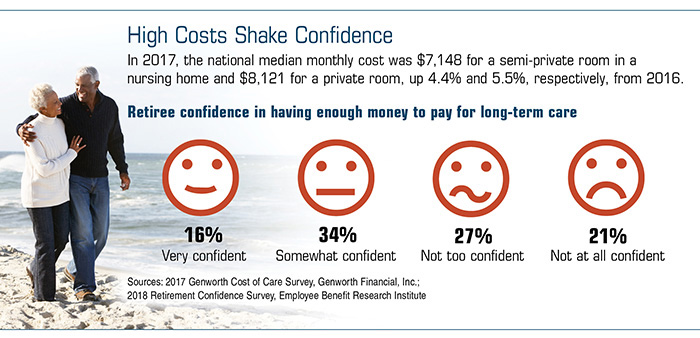Little Known Facts About Pacific Prime.
Little Known Facts About Pacific Prime.
Blog Article
The Basic Principles Of Pacific Prime
Table of ContentsUnknown Facts About Pacific PrimeThe 30-Second Trick For Pacific Prime4 Simple Techniques For Pacific PrimeNot known Facts About Pacific PrimeThe 5-Second Trick For Pacific Prime

This is due to the fact that the data were gathered for a duration of strong economic efficiency. Of the approximated 42 million individuals who were without insurance, almost about 420,000 (regarding 1 percent) were under 65 years old, the age at which most Americans become eligible for Medicare; 32 million were grownups in between ages 18 and 65, about 19 percent of all grownups in this age; and 10 million were kids under 18 years of age, about 13.9 percent of all kids (Mills, 2000).
These price quotes of the variety of persons uninsured are produced from the yearly March Supplement to the Existing Populace Study (CPS), conducted by the Census Bureau. Unless otherwise noted, national price quotes of people without medical insurance and proportions of the population with different kinds of protection are based on the CPS, the most extensively made use of resource of price quotes of insurance policy coverage and uninsurance prices.
How Pacific Prime can Save You Time, Stress, and Money.

Still, the CPS is specifically beneficial because it creates annual price quotes fairly swiftly, reporting the previous year's insurance policy coverage estimates each September, and since it is the basis for a consistent set of quotes for more than two decades, permitting analysis of trends in insurance coverage gradually. For these reasons, as well as the extensive usage of the CPS in other researches of insurance policy coverage that exist in this record, we rely upon CPS price quotes, with constraints kept in mind.

The price quote of the number of without insurance people broadens when a population's insurance standing is tracked for several years. Over a three-year duration beginning early in 1993, 72 million individuals, 29 percent of the united state population, were without coverage for at the very least one month. Within my link a single year (1994 ), 53 million individuals experienced a minimum of a month without coverage (Bennefield, 1998a)
Six out of every 10 uninsured grownups are themselves employed. Although functioning does improve the likelihood that and one's member of the family will certainly have insurance coverage, it is not a guarantee. Even participants of households with 2 full-time wage income earners have almost a one-in-ten opportunity of being uninsured (9.1 percent without insurance rate) (Hoffman and Pohl, 2000).
All about Pacific Prime
New immigrants represent a substantial proportion of individuals without wellness insurance coverage. One evaluation has actually connected a significant part of the current development in the dimension of the united state uninsured populace to immigrants that got here in the nation in between 1994 and 1998 (Camarota and Edwards, 2000). Current immigrants (those who pertained to the USA within the previous 4 years) do have a high price of being without insurance (46 percent), but they and their kids represent just 6 percent of those without insurance coverage across the country (Holahan et al., 2001).
The relationship between health and wellness insurance coverage and access to care is well developed, as recorded later on in this phase. The partnership between health insurance coverage and health and wellness outcomes is neither straight neither easy, a substantial scientific and health and wellness services study literature links health insurance policy coverage to improved accessibility to care, far better high quality, and improved individual and population health standing.
Degrees of analysis for checking out the impacts of uninsurance. This conversation of medical insurance coverage concentrates primarily on the U.S. populace under age 65 since practically all Americans 65 and older have Medicare or various other public protection. Furthermore, it concentrates particularly on those with no medical insurance for any kind of length of time.
Getting My Pacific Prime To Work
The problems faced by the underinsured are in some respects similar to those dealt with by the uninsured, although they are typically less severe. international health insurance. Uninsurance and underinsurance, however, involve distinctly various plan concerns, and the strategies for resolving them might differ. Throughout this study and the 5 records to comply with, the main focus gets on individuals with no health and wellness insurance and thus no aid in spending for healthcare past what is available through charity and security web organizations
Medical insurance is an effective aspect influencing receipt of care due to the fact that both clients and physicians respond to the out-of-pocket price of solutions - https://trello.com/w/pacificpr1me_. Medical insurance, however, is neither necessary neither adequate to acquire access to clinical services. The independent and direct effect of wellness insurance coverage on accessibility to wellness services is well developed.
Others will get the health and wellness treatment they need also without medical insurance, by spending for it out of pocket or seeking it from providers that offer care free or at highly subsidized rates. For still others, medical insurance alone does not guarantee receipt of treatment because of other nonfinancial obstacles, such as a lack of wellness care carriers in their community, restricted accessibility to transport, illiteracy, or linguistic and social distinctions.
Our Pacific Prime Statements
Formal research study about uninsured populations in the United States dates to the late 1920s and early 1930s when the Committee on the Cost of Medical Treatment generated a collection of records concerning funding medical professional office sees and hospital stays. This concern came to be significant as the varieties of clinically indigent climbed throughout the Great Anxiety.
Report this page